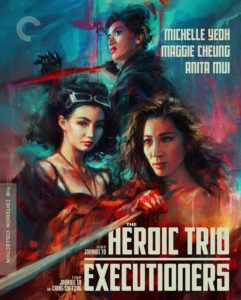Martial arts cinema has always been an exciting genre that inspires viewers and offers them to watch films full of action, philosophy, and impressive stunts. Finally, it is imperative to notice that the concepts of martial arts films have significantly transformed from the first Bruce Lee pictures to the contemporary Donnie Yen movies due to the changes in society, technology, and approaches to film production. Indeed, this evolution proves that the genre still has a good following, and it can be fitted into modern tastes and trends without compromising the origin.
Bruce Lee: The Father of Kung Fu Movies
Bruce Lee has to be regarded as the most significant personality in martial arts films. His films, including “Enter the Dragon” and “The Way of the Dragon,” introduced martial arts to the world with shows of exceptional physical might blended with philosophical wisdom. Lee brought a new philosophy to how martial arts was portrayed on the big screen by bringing in speed, efficiency, and realism. His work is not limited to his movies, as he inspired so many martial artists and filmmakers to follow their dreams of portraying martial arts in motion pictures.
In this regard, it is possible to state that Bruce Lee contributed to shaping the course of action cinema in many ways, having laid down a model that the later generations would further develop. Knowing Bruce Lee’s role is mandatory for those who would like to get to the core of martial arts movies.
The Dawn of Asian Action Movies
After the death of Bruce Lee, many martial arts films were produced in the 1970s and the 1980s, regarded as the martial arts cinema’s ‘Golden Age’. This period saw the appearance of such legends as Jackie Chan and the introduction of Jet Li into action films. The Chinese action comedies with Jackie Chan and the more serious martial arts flicks of Jet Li took Chinese action films to a new level.
The movies of this period were noted for complex battle sequences and the themes of different types of martial arts, including Kung Fu this period also marked the globalization of martial arts cinema, where the films began to find a market in the Western world and inspired new directors and fans.
Donnie Yen and the Evolution of Contemporary Martial Arts Movies
Moving to the modern period of martial arts films, the talented actor and martial artist Donnie Yen has become the main performer in films of this genre. Known for his roles in films such as “Ip Man” and “Rogue One: In “Rogue One: A Star Wars Story,” Yen has managed to bring the arts of martial combat and modern action cinematography closer. He has been able to weave realistic fight scenes with good storylines, which makes him a great example in the said genre.
The philosophy of fighting, such as honor, discipline, and determination for survival, is also stressed in most of the films directed by Yen. This approach appeals to audiences globally as it enhances the understanding of martial arts cinema as it is enjoyable and can provoke people’s minds. To the extent that people would like to improve their own movie experiences, it is helpful to integrate aspects of Yen’s approach and principles.
Using motifs from contemporary martial arts films can benefit the audience willing to expand their knowledge about the genre. In the same way, the strategic mindset presented in these films can also be applied when it comes to other activities, such as assessing the various bonuses offered on the Internet for casino games for better strategies.
Influence of BJJ and MMA in Modern Film
More recently, Brazilian Jiu-Jitsu (BJJ) and Mixed Martial Arts (MMA) have greatly influenced martial arts films. These disciplines, characterized by hand-to-hand combat and practical usefulness in today’s world, have added a degree of realism to fight sequences. Movies such as “John Wick” illustrate how BJJ and MMA complement each other with traditional martial arts as they deliver realistic and impressive fight scenes.
The introduction of BJJ and, more so, MMA has also expanded the market for martial arts films beyond the traditional martial arts fans to those who enjoy watching professional fighting and the technicalities of combat sports. This trend indicates artists’ desire to have more realistic and gritty action scenes than the previously stylized ones. With the popularity of BJJ and MMA on the rise, it is only natural that martial arts cinema will be influenced and enriched with new visions and methods for the directors.
If you are an MMA fan, you can find the PrizePicks Promo Code for free plays on upcoming UFC and MMA events.
The Future of Martial Arts in Film
The development of martial arts cinema is quite prospective, with the use of new technologies and shifts in the audience’s tastes. Two of the most promising technologies are VR and AR, the potential of which, when integrated into the show, will enable the viewers to “get into the ring” like never before. Also, the availability of streaming services has expanded the distribution of martial arts films worldwide and influenced future generations of directors.
More to this, more themes and subgenres will emerge from the existing ones, thereby making the genre grow from strength to strength, borrowing characteristics from other existing genres while at the same time developing new trends and technologies. From the depiction of the actual fighting, the depiction of the concept of fighting, the depiction of the concepts of philosophy, or the use of current technology, martial arts cinema is a lively and active part of the motion picture industry. Therefore, for fans and anyone interested in becoming a director, it is crucial to know what has been done and is being produced in the genre to enjoy what will be created.
Conclusion
This paper aims to give the readers an understanding that martial arts cinema has grown from what was seen in the Bruce Lee movies of the 70s and 80s and has become a rich and vibrant genre still popular today. From the height of the Martial Arts Cinema to the presence of today’s Donnie Yen and from the incorporation of Brazilian Jiu Jitsu and Mixed Martial Arts, the genre has never ceased to evolve. Moving into the future, new forms of technology and storytelling methods will help further expand martial arts films.




















4 Comments